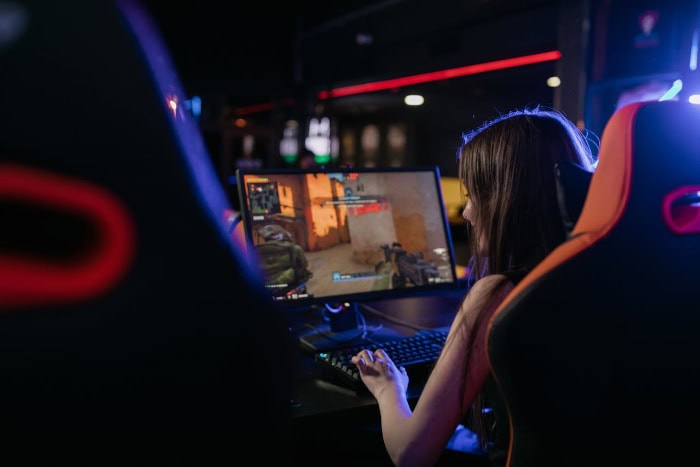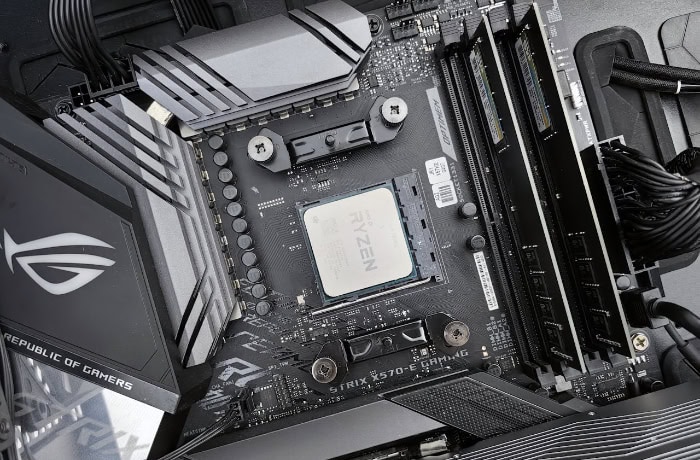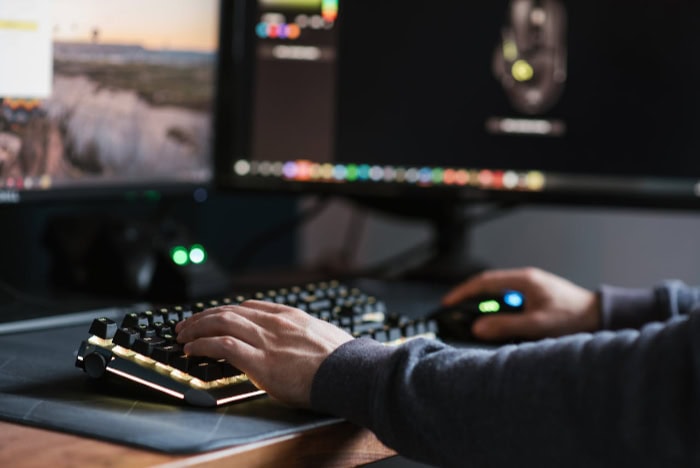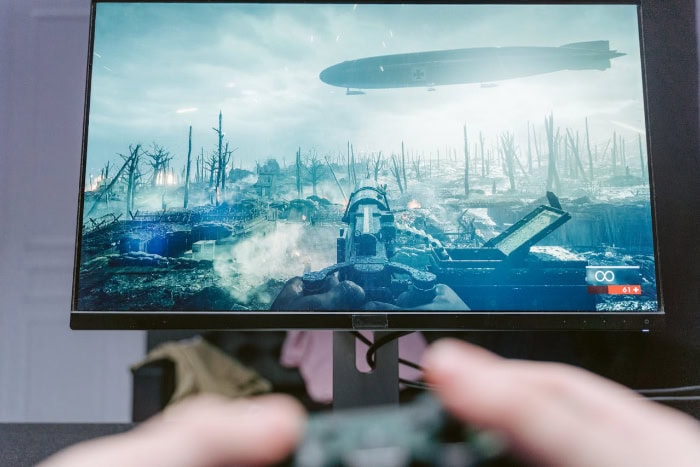How to Increase FPS and Boost Gaming Performance on PC

Frames per second (FPS) is the lifeblood of any gaming experience. It's the metric that separates a smooth, immersive adventure from a frustrating, stuttering mess.
For PC gamers, the quest for higher FPS is a constant pursuit, a never-ending journey to squeeze every last drop of performance from their rigs. But how do you achieve those coveted high frame rates?
What sorcery is required to transform your gaming setup from mediocre to mind-blowing? Fear not, intrepid gamer, for we have the answers you seek.
Software Optimization Techniques
Before investing in costly hardware upgrades, it's wise to explore software optimization techniques that can significantly improve your gaming performance. These methods often require minimal effort but can yield noticeable results in boosting FPS and overall system responsiveness.
Keep Graphics Drivers Up to Date
One of the simplest yet most effective ways to enhance gaming performance is by ensuring your graphics drivers are always up to date. GPU manufacturers like Nvidia and AMD regularly release driver updates that address bugs, improve stability, and optimize performance for the latest games.
To update your graphics drivers:
- Visit the official website of your GPU manufacturer (Nvidia or AMD).
- Download the most recent driver version compatible with your graphics card model and operating system.
- Install the driver and restart your computer for the changes to take effect.
Alternatively, you can use built-in tools like Nvidia GeForce Experience or AMD Radeon Software to automatically check for and install driver updates.
Utilize Windows Game Mode
Microsoft introduced Game Mode in Windows 10 to prioritize system resources for gaming applications. When enabled, Game Mode allocates more CPU and GPU power to the game you're playing, potentially resulting in higher FPS and smoother gameplay.
To turn on Game Mode:
- Press the Windows key + I to open Settings.
- Click on Gaming.
- Toggle the “Game Mode” option to “On.”
While the performance gains from Game Mode may vary depending on your system configuration and the games you play, it's worth enabling to ensure your games receive the necessary resources.
Fine-Tune In-Game Graphics Settings
Most modern games offer a plethora of graphics settings that allow you to customize visual quality and performance. Lowering certain settings can significantly increase FPS without drastically compromising the gaming experience.
Here are some common settings to adjust:
- Resolution: Lowering the game's resolution can greatly improve FPS, especially on lower-end hardware.
- Anti-Aliasing: Reducing or disabling anti-aliasing can boost performance at the cost of some visual smoothness.
- Shadow Quality: Lowering shadow quality or distance can provide a decent FPS boost with minimal visual impact.
- Texture Quality: Adjusting texture quality based on your GPU's VRAM capacity can help maintain stable frame rates.
- Post-Processing Effects: Disabling or reducing post-processing effects like motion blur, depth of field, and ambient occlusion can improve performance.
Experiment with different combinations of settings to find the optimal balance between visual fidelity and performance for your specific setup.
Optimize Windows Settings for Gaming Performance
For laptop users, adjusting certain Windows settings can help prioritize gaming performance over power efficiency.
Here's how to optimize your laptop for gaming:
- Open the Control Panel and navigate to Hardware and Sound > Power Options.
- Click on “Create a power plan” and select “High performance.”
- Customize the plan settings to ensure the GPU and CPU are running at their maximum potential when gaming.
Additionally, you can disable background applications and services that may consume system resources and impact gaming performance. To do this:
- Press Ctrl + Shift + Esc to open the Task Manager.
- Click on the “Startup” tab and disable any unnecessary programs that automatically start with Windows.
- Close any running applications that you don't need while gaming to free up resources.
Hardware Upgrades for Better Performance

While software optimizations can provide significant improvements, there comes a point where hardware limitations become the primary bottleneck for gaming performance. Upgrading your PC's components can dramatically increase your FPS and overall gaming experience.
Boosting Graphics Power with a New GPU
The graphics card is often considered the heart of a gaming PC, and for good reason. It's responsible for rendering the complex visuals in modern games, and a powerful GPU can make a world of difference in your gaming performance.
When considering a GPU upgrade:
- Assess your current GPU's performance in the games you play most frequently.
- Research newer GPU models that offer significant performance improvements over your current card.
- Consider your budget and the resolution you typically game at (1080p, 1440p, or 4K).
- Check your power supply unit (PSU) to ensure it can handle the new GPU's power requirements.
- Measure your case to confirm the new GPU will fit physically.
Popular GPU options include the Nvidia GeForce RTX series and AMD Radeon RX series. Remember that the latest and greatest GPUs can be expensive, so balance your budget with your performance needs.
Expanding Memory with Additional RAM
Random Access Memory (RAM) plays a crucial role in gaming performance, especially in modern titles that require large amounts of memory. Insufficient RAM can lead to stuttering, long load times, and even crashes.
To upgrade your RAM:
- Determine how much RAM your system currently has and what type (DDR3, DDR4, or DDR5).
- Check your motherboard's specifications for maximum supported RAM capacity and speed.
- Consider upgrading to at least 16GB for modern gaming, with 32GB being ideal for future-proofing.
- Ensure you buy RAM modules that are compatible with your existing setup if you're adding to your current configuration.
When installing new RAM, make sure to place the modules in the correct slots as specified by your motherboard manual to take advantage of dual-channel or quad-channel configurations for optimal performance.
Accelerating Load Times with an SSD
Solid State Drives (SSDs) have become a game-changer for PC performance, offering significantly faster read and write speeds compared to traditional hard disk drives (HDDs). For gaming, an SSD can drastically reduce load times and improve overall system responsiveness. To add an SSD to your system:
- Choose between SATA and NVMe SSDs, with NVMe offering faster speeds but potentially at a higher cost.
- Determine the available storage connections on your motherboard (SATA ports or M.2 slots).
- Select an SSD with sufficient capacity for your operating system and favorite games (500GB to 1TB is often a good starting point).
- If replacing your boot drive, consider cloning your existing drive to the new SSD for a seamless transition.
Even if you can't afford a large SSD, a smaller one for your operating system and a few frequently played games can still provide a noticeable performance boost.
Upgrading Your CPU for Enhanced Processing Power
While the GPU handles most of the graphical workload in games, the CPU plays a crucial role in physics calculations, AI behavior, and managing background processes. A CPU upgrade can be particularly beneficial in CPU-intensive games or when streaming your gameplay. When considering a CPU upgrade:
- Identify your current CPU and motherboard socket type.
- Research compatible CPUs that offer significant performance improvements.
- Check if your motherboard supports the new CPU (you may need a BIOS update).
- Consider the cooling requirements of the new CPU, as you might need to upgrade your CPU cooler as well.
- Evaluate whether a platform upgrade (new CPU, motherboard, and potentially RAM) might be more cost-effective in the long run.
Popular CPU options include Intel's Core series and AMD's Ryzen lineup. Remember that a CPU upgrade often requires careful consideration of compatibility and may involve upgrading other components as well.
Advanced Optimization Strategies

For those seeking to push their gaming performance to the limit, advanced optimization strategies can help you extract every last frame from your hardware. These techniques often involve tweaking settings beyond the standard options and may require a more in-depth understanding of your system's components.
Unleashing Performance with Overclocking
Overclocking involves pushing your CPU and GPU beyond their default clock speeds to achieve higher performance. By increasing the frequency at which these components operate, you can potentially gain a significant boost in FPS.
However, overclocking also comes with risks, such as increased heat generation and potential instability. To safely overclock your GPU and CPU:
- Research your specific CPU and GPU models to determine their overclocking potential and recommended settings.
- Ensure your cooling solution is adequate to handle the increased heat generated by overclocking.
- Gradually increase clock speeds and test for stability using benchmarking tools and stress tests.
- Monitor temperatures and adjust voltage settings as needed to maintain stability and prevent overheating.
- Be prepared to revert to default settings if instability or other issues arise.
Overclocking can be a rewarding pursuit for enthusiasts, but it's crucial to approach it with caution and a willingness to learn from the overclocking community's wealth of knowledge.
Fine-Tuning BIOS Settings for Optimal Performance
Your motherboard's BIOS (Basic Input/Output System) contains a variety of settings that can impact system performance. While the default settings are often sufficient for most users, advanced users can tweak certain parameters to squeeze out additional performance gains.
Some BIOS settings to consider include:
- CPU and RAM frequency and voltage settings
- CPU core and cache ratios
- Memory timings and profiles (XMP)
- Fan and pump control settings for optimal cooling
- PCIe lane configuration and power management settings
Before making changes to your BIOS settings, be sure to research your specific motherboard model and the implications of each setting. It's also a good idea to save your current BIOS configuration as a backup in case you need to revert changes.
Keeping Your System Cool for Sustained Performance
Effective cooling is essential for maintaining optimal gaming performance, especially when overclocking or running demanding titles for extended periods. High temperatures can cause your CPU and GPU to throttle their clock speeds, resulting in reduced performance.
To keep your system running cool and stable:
- Invest in a high-quality CPU cooler, either air or liquid, that's appropriate for your specific CPU and case.
- Ensure your case has adequate airflow, with a balance of intake and exhaust fans to create positive air pressure.
- Consider replacing your GPU's stock cooling solution with an aftermarket cooler or liquid cooling block for better heat dissipation.
- Regularly clean your system to remove dust buildup, which can impede airflow and lead to higher temperatures.
- Monitor your temperatures during gaming sessions and adjust fan curves or cooling settings as needed.
Monitoring and Measuring Performance

Optimizing your gaming performance is an ongoing process that requires careful monitoring and measurement. By tracking key metrics like FPS and identifying potential bottlenecks, you can make informed decisions about where to focus your optimization efforts.
Leveraging FPS Tracking Tools
Frames per second (FPS) is the most crucial metric for gauging your gaming performance. Fortunately, there are numerous tools available to help you monitor your FPS in real-time. Some popular options include:
- Fraps: A lightweight, easy-to-use FPS tracking and benchmarking tool.
- MSI Afterburner: A versatile utility that combines FPS monitoring with overclocking and hardware monitoring features.
- Steam's In-Game FPS Counter: A built-in FPS tracking feature available for games launched through the Steam client.
- NVIDIA GeForce Experience: An FPS counter and optimization tool for NVIDIA GPU users.
Pinpointing System Bottlenecks
A bottleneck occurs when one component of your system is significantly slower than the others, holding back overall performance. Common bottlenecks in gaming PCs include:
- CPU Bottlenecks: When your CPU is too slow to keep up with your GPU, resulting in lower FPS.
- GPU Bottlenecks: When your GPU is the limiting factor, unable to render frames quickly enough to maintain high FPS.
- RAM Bottlenecks: When you have insufficient RAM or slow RAM speeds, causing stuttering and long load times.
- Storage Bottlenecks: When your storage drive (particularly if it's an HDD) can't load game assets fast enough, leading to stuttering and pop-in.
To identify bottlenecks, you can use tools like Task Manager (for CPU and RAM usage), MSI Afterburner (for GPU usage), and Windows Resource Monitor (for storage usage).
Finding the Right Balance Between Visuals and Performance
One of the most effective ways to improve gaming performance is to adjust in-game graphics settings. However, finding the right balance between visual quality and FPS can be a challenge. To strike the optimal balance:
- Start with your game's preset graphics settings (e.g., Low, Medium, High, Ultra).
- Gradually increase settings until you notice a significant drop in FPS.
- Tweak individual settings, prioritizing those with the greatest impact on performance (e.g., shadows, anti-aliasing, post-processing effects).
- Use FPS tracking tools to gauge the impact of each setting change.
- Find the combination of settings that provides the best visual quality while maintaining your desired FPS target.
Remember that the ideal balance will vary from game to game and depend on your personal preferences and system capabilities.
Optimizing Your Display for Smooth Gameplay
Your monitor plays a crucial role in your gaming experience, and understanding its capabilities can help you optimize your performance. Two key factors to consider are refresh rate and adaptive sync technologies:
- Refresh Rate: Measured in Hz, refresh rate determines how many times per second your monitor can display a new image. Higher refresh rates (e.g., 144Hz, 240Hz) can provide smoother gameplay, but your FPS must exceed the refresh rate to fully benefit.
- Adaptive Sync: Technologies like NVIDIA G-Sync and AMD FreeSync synchronize your monitor's refresh rate with your GPU's frame rate, eliminating screen tearing and minimizing stuttering. To take advantage of adaptive sync, you'll need a compatible monitor and GPU.
When shopping for a gaming monitor, look for models with high refresh rates and adaptive sync support. Ensure your GPU is powerful enough to consistently deliver FPS that matches or exceeds your monitor's refresh rate for the smoothest possible gameplay.
Conclusion
Boosting your gaming performance and increasing FPS requires a multi-faceted approach. From software tweaks to hardware upgrades, each step contributes to a smoother, more enjoyable gaming experience.
Start with optimizing your current setup through driver updates, in-game settings adjustments, and Windows optimizations. If you're still craving more performance, consider strategic hardware upgrades like a new GPU or additional RAM.
For those willing to push further, advanced techniques such as overclocking and BIOS tuning can squeeze out extra frames. Remember to monitor your system's performance regularly, identifying bottlenecks and balancing visual quality with frame rates.


